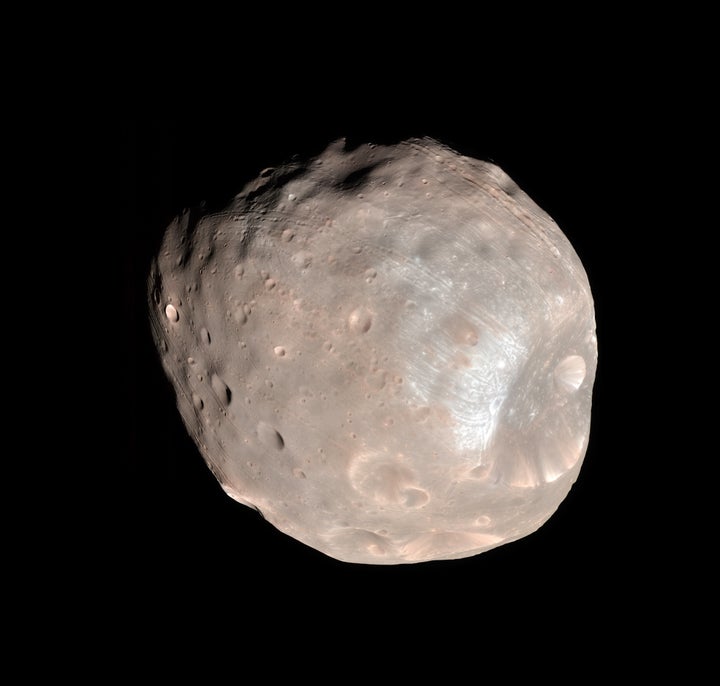It’s a question that has perplexed scientists for years: where did Mars’ two moons, Phobos and Deimos, come from?
Many planetary scientists believe they were asteroids captured during the planet’s orbit of the sun. But now two independent studies suggest an alternative theory.
Research conducted by a team of French, Belgian and Japanese scientists relying on computer simulations suggests that the two moons formed during a gigantic collision between Mars and a protoplanet one-third its size.

It’s a theory that has been proposed before, but previously scientists couldn’t explain why such an impact would create two small moons rather than a single giant one, especially given the sparsity of debris in the area where Phobos and Deimos would have formed. But researchers now have an answer.
The collision, which occurred 100 to 800 million years after the start of the planet’s formation, did in fact lead to the creation of a large moon which formed from a very wide disk around the planet, according to the research. The disk would have been comprised of two halves: an inner part composed of matter in fusion, and a much thinner outer layer made up primarily of gas.
The larger and denser of the two parts of the disk, the inner segment is believed to have formed a moon one thousand times the size of Phobos. The gravitational pull of the large moon would have also led to the formation of several, very small “embryo satellites” which eventually clumped together to create 10 small moons. Today, only two remain.

The larger, inner moon is believed to have spiralled back into Mars, potentially explaining the Borealis basin, a vast lowland region towards the north of the planet. Of the remaining 10 smaller moons, eight would also be pulled back to the planet’s surface by gravity. Phobos will now follow. It currently orbits 6,000km from the surface of the planet and is destined to collide with the surface and disintegrate within the next 20m to 40m years.
In 2022, the Japanese Martian Moons Exploration will launch a mission to collect samples from Phobos. The journey will take five years, but it could help to corroborate the latest study.
Story by: Oscar Williams
